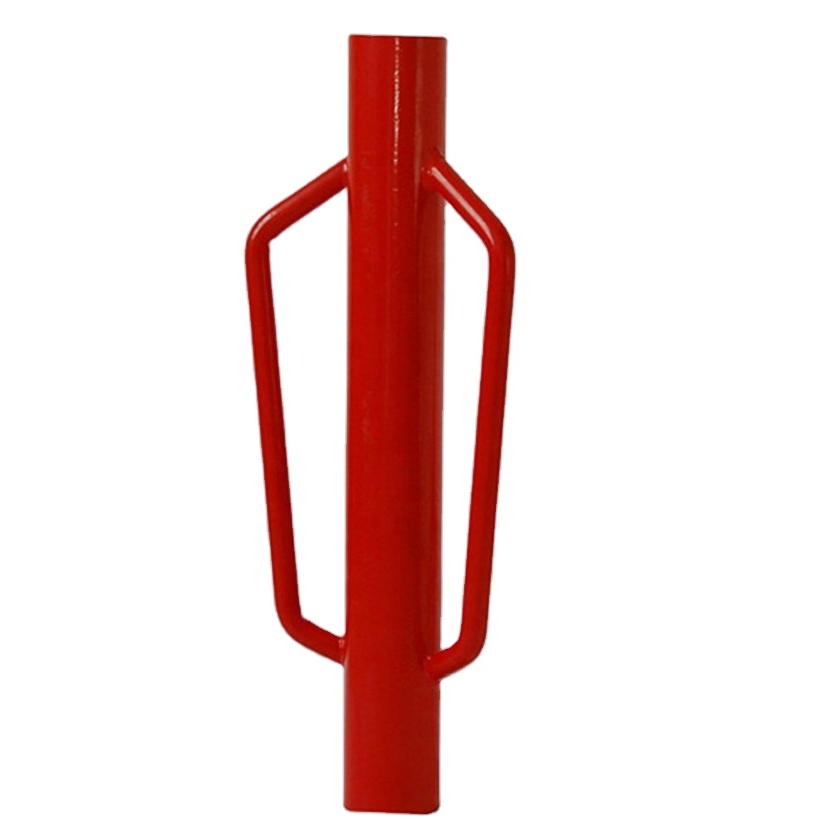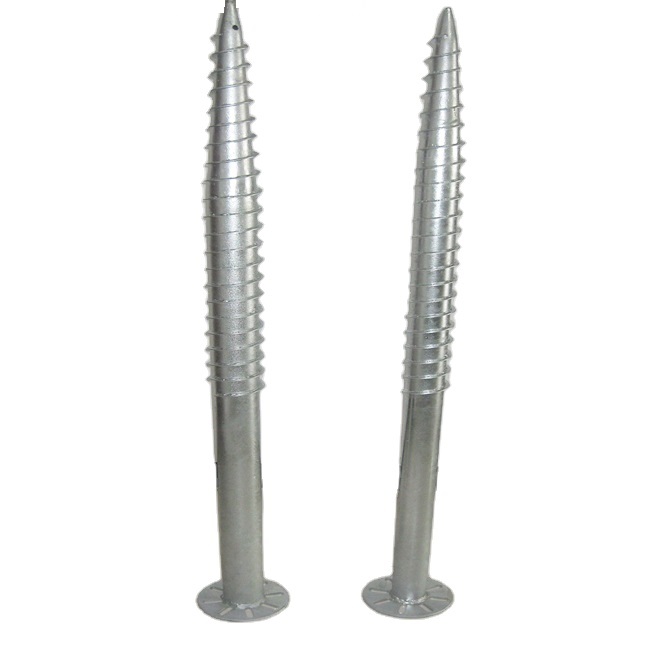Partner content: This content was created by a business partner of Dow Jones and researched and written independently of the MarketWatch newsroom. Links in this article may result in us earning a commission. Learn More
Leonardo David is an electromechanical engineer, MBA, energy consultant and technical writer. His energy-efficiency and solar consulting experience covers sectors including banking, textile manufacturing, plastics processing, pharmaceutics, education, food processing, real estate and retail. He has also been writing articles about energy and engineering topics since 2015. Steel Adapter Screw Piles

Tori Addison is an editor who has worked in the digital marketing industry for over five years. Her experience includes communications and marketing work in the nonprofit, governmental and academic sectors. A journalist by trade, she started her career covering politics and news in New York’s Hudson Valley. Her work included coverage of local and state budgets, federal financial regulations and health care legislation.
Get your free solar installation quote
Ground-mounted solar panels are panels you set up on the ground rather than on your roof. Ground-mounted panels have a slightly higher cost than roof installations but can generate more electricity when site conditions are favorable.
In this article, we at the MarketWatch Guides Team will cover what you need to know about ground-mounted solar panels, including pros and cons, costs and system maintenance.
Rooftop solar energy systems are the traditional option for homeowners, but a ground-mounted solar array is also viable if you have the space. Solar installers can design a ground-mounted system at an optimal tilt angle to maximize sunlight collection, while the pitch and orientation of your roof can limit traditional rooftop panels.
Installers can place ground-mounted solar panels on the sunniest spot of your property, positioned for maximum energy production. However, ground installations have a higher cost due to labor and equipment. Since you do not anchor the panels to an existing roof, installers need to construct a dedicated structure for the system.
Rooftop systems are the most popular option for homeowners and businesses. Installation costs are lower because you use an existing roof structure, and rooftop systems do not require ground space. However, rooftop PV systems are limited to the orientations and tilt angles allowed by the existing roof structure, which can impact energy production.
It costs more to install ground-mounted solar panels since you need a dedicated structure for the racking system. The cost of rooftop solar systems is lower because installers can attach racking equipment directly to your roof structure. For example, a solar carport is a type of ground-mounted PV system, where the structure is tall enough to allow vehicle parking. However, the extra height increases the cost of ground-mounted solar projects.
EnergySage conducted a detailed cost comparison for rooftop installations, ground-mounted solar panel systems and solar carports. The results are as follows:
Ground-mounted solar power systems are around 11% more expensive than rooftop installations, while a solar carport is 18% more expensive due to the extra height. However, a ground installation is cost-effective when you can achieve panel productivity that outweighs the added price. All three system configurations are eligible for the 30% solar federal tax credit , and some states offer dedicated incentives for solar carports.
Solar trackers increase the productivity of PV systems by directing your panels toward the sun but are expensive. Some estimates show tracking systems can increase the cost of a solar installation by 40% to 100%.
There are two main types of solar trackers available:
Single-axis trackers can achieve a productivity boost of 25% to 35%, and dual-axis trackers an additional 8% to 10%, according to AltEnergyMag . However, adding more solar panels to your system is a more cost-effective way to increase electricity production. Tracking systems have been used successfully in large-scale solar farms but tend to be less effective in small installations.
Cleaning is much easier with a ground-mounted system since the panels are closer to the ground and easily reachable from both sides. Replacing inverters and other system components is also easier because you can access wiring and connections below the panels. This access is not possible with roof-mounted systems since technicians conceal many components during installation.
Many high-quality solar panels come with a 25 to 30-year warranty to cover performance issues or repairs and need little maintenance beyond regular cleaning. Other system components, like solar batteries and inverters, generally need a replacement after 10 to 12 years.
Maintenance becomes more complex and expensive if you add solar trackers since they have moving parts subject to mechanical wear. For this reason, you must inspect and oil solar tracking systems regularly.
If you know your home’s annual electricity consumption, you can use the World Bank Global Solar Atlas to estimate the number of solar panels you need . Here is a step-by-step example using the average home energy consumption of 10,632 kilowatt-hours (kWh) per year, as reported by the U.S. Energy Information Administration .
If using solar trackers, you will need fewer panels to reach an electricity output of 10,632 kWh per year. However, the added cost of a tracking mechanism can outweigh how much you save by purchasing fewer panels. The best solar companies have experience with all types of rooftop and ground installations and can determine the ideal system configuration for your home.
Ground-mounted solar panels are worth it if you have a property with the necessary space. While the geometry of your roof can limit rooftop solar placement and production, installers can optimize ground-mounted panels to capture maximum sunshine. Or if you want to take advantage of the area below your solar array, you can use a taller structure and build a solar carport.
Shading can be an issue if there are several trees or other obstructions around the location where you plan to install ground-mounted panels. In this case, you can consider an elevated pole-mounted system instead of a standard ground mount.
Ground-mounted solar systems typically cost more than roof arrays but are more efficient, which can lead to higher energy production. With favorable site conditions and a low-interest financing option (like a zero upfront loan), you can help you achieve more energy savings to pay off your system within six to 10 years . And with most solar panels lasting 25 or more years, you will see electricity savings for multiple decades.
There are pros and cons to both rooftop installations and ground-mounted panels. You can install ground panels at an optimal tilt angle and orientation to maximize your system’s power output. However, ground-mounted systems cost more to install and require more space on your property. Ultimately, the best type of system for you will depend on your energy needs, property specifics and budget.
While there is no optimal distance requirement, you should avoid excessive separation between your solar panels and your home. You must wire your solar array to your home’s electrical system, and a longer circuit costs more. Longer circuits also result in a higher voltage drop between your solar array and your home. You may have to install additional wiring to maintain the acceptable voltage and prevent energy loss, making the circuit more expensive.
There are several options, like building a solar carport. You can also use the shaded area below your panels as a gardening area, but make sure that no electrical connections are within reach.
Solar panel dimensions depend on the brand and model. Panels are typically around 40 inches wide with a height between 65 inches to 80 inches, depending on the number of PV cells. Based on these dimensions, one panel would cover an area of 18 to 22 square feet. So you could expect a solar system with 20 panels to cover 360 to 440 square feet.
Leonardo David is an electromechanical engineer, MBA, energy consultant and technical writer. His energy-efficiency and solar consulting experience covers sectors including banking, textile manufacturing, plastics processing, pharmaceutics, education, food processing, real estate and retail. He has also been writing articles about energy and engineering topics since 2015.
Tori Addison is an editor who has worked in the digital marketing industry for over five years. Her experience includes communications and marketing work in the nonprofit, governmental and academic sectors. A journalist by trade, she started her career covering politics and news in New York’s Hudson Valley. Her work included coverage of local and state budgets, federal financial regulations and health care legislation.
Copyright © 2023 MarketWatch, Inc. All rights reserved.

Ground Anchor For Trailer By using this site you agree to the Subscriber Agreement & Terms of Use, Privacy Notice, and Cookie Notice.